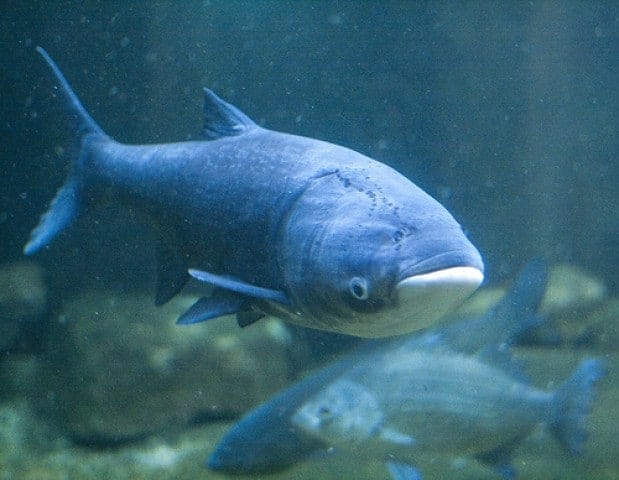Tiny populations of invasive species such as Asian carp start their domination of new ecosystems by hanging out at local landmarks, according to a new study published in the journal Theoretical Ecology this week.
Understanding how species use these local hotspots can play a key role in how officials approach population control for conserving endangered species and controlling invasive ones.
“We recently found that only ten Asian carp are needed to establish a population in the Great Lakes,” said Kim Cuddington, an ecology professor from the University of Waterloo. “But then we asked, if there are so few individuals initially, how do they find a mate and create an ecological disaster?”
Professor Cuddington’s research shows that Asian carp, butterflies and several other species find their mates by congregating at easily identifiable locations such as the area’s tallest tree or mountain. This highly efficient mate-finding strategy known as “landmarking” allows species to reproduce even when population densities are impossibly low.
To understand how landmarking works, Cuddington uses a branch of math called combinatorics, the most famous example of which is the birthday problem – how many people do you need before you have two people with the same birthday (the answer is 23).
Landmarking works the same way: What is the probability of a male finding a female at a fixed number of sites? The more prominent and rare the location is, the greater the chance a male will meet a female.
For example, if there are ten bars in town, your chance of meeting a mate is 10 per cent. But if there is only one bar in town, your chance of meeting that mate is 100 per cent.
While understanding landmarking can inform strategies for population control, Cuddington’s research highlights how it cannot be managed intuitively.
“With an endangered species, if the number of landmarked sites is increased, the individuals will have a lower chance of finding a mate,” said Cuddington. “By contrast, decreasing the number of landmarked sites in an effort to keep invasive species from reproducing has the opposite effect, and ensures individuals have a near certain chance of finding a mate.
In the case of the Asian carp, these species use river water quality and flow rate as landmarks and can therefore find a mate more easily than originally thought.
“For species like Asian carp, precautionary measures have to be extraordinary to prevent establishment in the Great Lakes,” said Cuddington. “When we see Asian carp use landmarking, officials need to worry.”
If our reporting has informed or inspired you, please consider making a donation. Every contribution, no matter the size, empowers us to continue delivering accurate, engaging, and trustworthy science and medical news. Independent journalism requires time, effort, and resources—your support ensures we can keep uncovering the stories that matter most to you.
Join us in making knowledge accessible and impactful. Thank you for standing with us!


This definitely confirms that invaders dominate the new area/ nations as the history truthfully depicts. Why so? The locals remain happy in their locality not knowing that the invaders have the idea of dominating them.